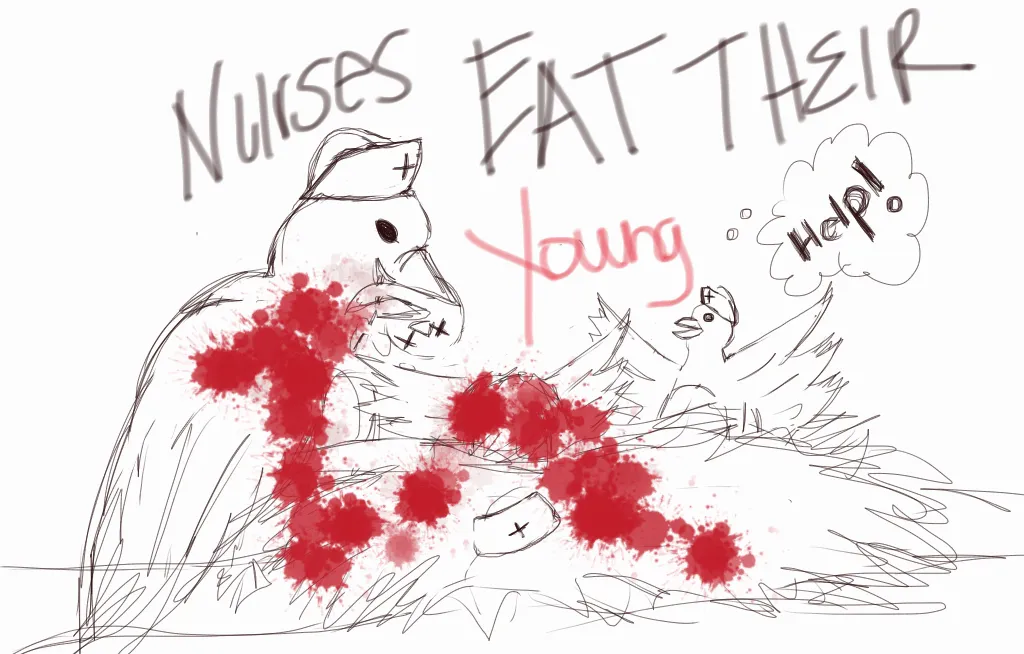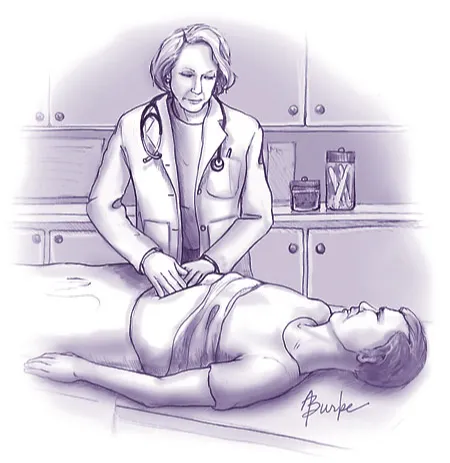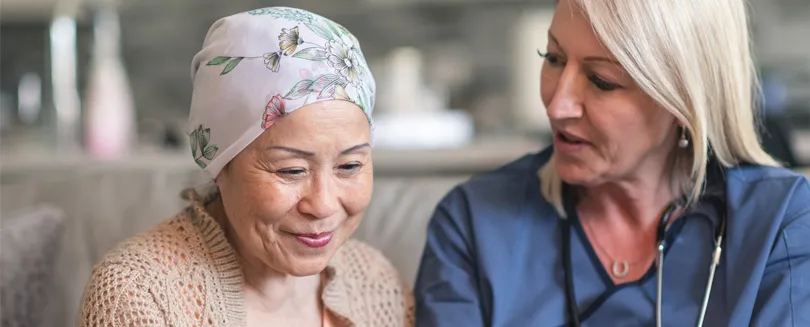Clinical Journal of Nursing

The Elusive Lessons of Encephalitis Lethargica
Tags: autoimmune diseases clinical COVID-19 disease infection neurologist
Encephalitis Lethargica (EL) emerged as a deadly pandemic in the early 20th century, leaving many permanently disabled. Though rare today, its cause remains unknown. EL has two forms—dyskinetic (children) and Parkinsonian (adults). Researchers suspect links to influenza and COVID-19 due to shared neurological effects. Treatment is limited, and future viral pandemics could trigger EL’s return.
Read More →
Assessing Clinical Outcomes at Discharge with the Modified Rankin Scale (mRS) for Burn Patients
Tags: burn Burn Patients clinical Modified Rankin Scale outcome
Burn injury is a significant health problem that presents various challenges to the patient and healthcare providers. Each year in the United States, an estimated 486,000 burn injuries require medical attention, of which 40,000 require hospitalization (American Burn Association, 2016). Of these 40,000 around 30,000 are admitted to specialized burn centers, specializing in burn care and management. Statistics reveal that the common causes of burns are due to fire/flame at 43%, scalds 34%, contact 9%, electrical 4%, chemical 3%, and other 7%. (American Burn Association, 2016). The most common place of occurrence was in the home at 73%. Burns occur in children and adults, affecting 68% of males and 32% of females. Also reported by the American Burn Association (ABA) was a survival rate for all cases at 96.8% (2016). Furthermore, a reported survival rate of 96.8% for all cases by the ABA (2016), underscores the importance of comprehensive care for burn patients, which begins at the time of injury and extends throughout the rehabilitation process. An optimal outcome is achieved when the patient is reintegrated back into society at a functional preinjury level (Herndon, D. 2017).
Read More →
What Can We Do to Promote Professional Socialization in Nursing?
Tags: clinical mentoring nursing faculty perioperative professional socialization student nurse transitioning working together
Transitioning to a new work setting is challenging for many nurses regardless of the time spent in practice. Promoting professional socialization, through mentoring and precepting, helps to facilitate a smooth transition. Effective mentoring, using role play, reflective exercises, and debriefing, provides the transitioning nurse the opportunity to self-actualize his or her potential in the new work environment. The use of Benner’s Novice to Expert Theory and Duchscher's Stages of Transition Theory as a basis for mentorship enhances safety and quality in the provision of care.
Read More →
Post-Fall Care Nursing Algorithm
Tags: clinical Clinical Education fall care fall prevention falls nursing
Post-Fall care practices are an integral aspect to patient care. As we care for older adults it is important to consider post-fall care practices.
Read More →
Improving the Clinical Experience of Working with Undergraduate Nursing Students: A Team Approach
Tags: clinical clinical experience nursing school nursing students preceptorship student nurse students teamwork undergraduate working together
This article emphasizes the value of working together in training the future nurses, and suggests strategies and tools to assist in the process. Bringing quality and safety to nursing education in the classroom and clinical is of high importance. Staff nurses play a key role in the clinical preparation and success of the student nurse. Faculty, preceptors, students and the system at large can be more successful if working together to reach the learning objectives and goals. Designated educational units (DEU) are an example of improved clinical teaching/learning environments, but every clinical unit can participate and practice quality regardless to the formal structure and protocal of an established DEU. Understanding that the staff nurse plays a significant role in mentoring the future nurse generation is a reason enough to see working with students is a necessity rather than a burden.
Read More →
Scope of Advanced Practice for Nurses in the United Kingdom
Tags: advanced practice apn clinical critical care ICU nursing leadership united kingdom
A 3,500 word article which critically discusses advanced practice for nurses within the United Kingdom. This was originally written for an MSc in Advanced Practice.
Read More →
Rising to the Challenge of Nursing Education
Tags: clinical clinical experience education future of nursing healthcare system nurse shortage nursing faculty students teaching
As the nursing shortage and nursing faculty shortage continue, it is imperative that we look to innovative measures in order to increase the number of available baccalaureate prepared nurses. At the same time, it is crucial that we do not neglect the quality of education required to receive the Bachelor of Science in Nursing degree. This paper examines potential solutions to the ongoing nursing shortage.
Read More →
Clinical Decision Support Need for Standardization
Tags: CDSS clinical clinical decisions decision-making patients
Clinical Decision Support System (CDSS) is interactive software that assists physicians in decision-making about their patients. The system utilize data from pharmacy, laboratory, radiology, and other patient monitoring systems to help physicians in enhancing patient care. Statistics show an increase in the number of medical institutions adopting CDSS in pursuit of reducing errors, improving the nursing documentation and improving patient outcomes. This paper discusses errors arising from the use of CDSS and ways of preventing them.
Read More →
Remember When We Were Nursing Students
Tags: clinical clinical rotations nursing school nursing students stress student students violence
I remember, as most nurses can, their days in nursing school, feeling anxious and scared going to clinical rotations to take care of real living patients and not just the mannequins in the lab. Most us can also recall how the floor nurses treated us as students engrossed in our clinical rotations. There were nurses who made a positive impression on us and unfortunately there were nurses who did not make a positive impression. Terms such as “Incivility”, “Bullying”, “Vertical Violence” and “Internal Violence” have become too familiar in today’s nursing literature. As an Associate Professor of Nursing, it is a shame to have to include such terms in nursing lectures and worse of all trying to explain reasons this may be happening among nurses and just may happen to them as nursing students. According to Luparell (2011) “Because today’s student are tomorrow’s colleagues, conversations regarding incivility and bullying should include specific aspects of nursing academia and the preparation of new nurses”.
Read More →
Effect of Evidence-Based Method Clinical Education on Patients Care Quality and Their Satisfaction
Tags: chemotherapy clinical Clinical Education clinicals Evidence-based nursing patient care patient education patient satisfaction student nurse students
Nowadays, evidence-based education with a serious purpose, explicit and rational than the best current evidence to decision-making in nursing education has been addressed. This study aimed to assess the effect of clinical evidence based on the quality of patient care was performed Usual care based on traditional evidence-based care training has been under almost identical. Student feedback questionnaire data, patient satisfaction and quality of care were collected and then were analyzed with descriptive and inferential statistics. This study suggests that the use of evidence-based education in nursing care is not only effective as traditional education. But also knowledge and skills and promote high quality of care and the patient's hospital stay and costs were reduced.
Read More →
The Management of Crohn's Disease in Adults and Young People
Tags: abdominal pain adults best practice children Chron's clinical Crohn's disease disease treatment treatment options Young People
The guideline offers best practice advice on the care of adults, children and young people with Crohn's disease. These are the first evidence-based clinical and cost-effectiveness guidelines for Crohn's disease in the United Kingdom.
Read More →
Clinical Nursing: Keeping Your Skills In-Tune
Tags: advocate clinical clinical experience dermatitis health care medical technology student nurse
The primary duty of every nurse is the assessment of a patient’s physical and emotional well-being. This basic-skill learned in the very first nursing class is the one skill and primary duty the nurse will use every day with his and/or her patients.
Read More →
Keeping a Positive Outlook: My Clinical Experience as a Student Nurse
Tags: clinical clinical experience health care nursing students preceptorship student nurse
My experience in my senior year clinical preceptorship was without a doubt unique but I feel its uniqueness was in what I made of it, something every nursing student can do for themselves. If there is one lesson to gain from reading about my experiences it should be that the success of a clinical, whether a preceptorship or group experience, is entirely what the student makes of it.
Read More →Get Published for Free
Browse by Tag
advocate aging anesthesia behavior cardiac care Case Study child children clinical compassion COVID-19 critical care death diabetes disease education emergency department end of life ethical principles ethical values ethics future of nursing health health care ICU medication mental health nurse Nurse Education nursing nursing education nursing ethics nursing faculty nursing school nursing students PACU patient care patient outcomes patient safety pediatric poem profession risk factors stress student nurse students teaching therapy treatment
Most Popular Last Month
More from RN Journal
Crohn's Disease
Young and Healthy in the PACU
Ethical Issues Raised When Parents Refuse Medical Treatment For their Ill Children
A Valuable Lesson on Loss
Emma: raised in a care facility
Increasing demands on nurses and the role of the nurse educator: Developing nursing competencies
Missionary to Haiti
Who Will Be Left to Care for You?
Literature Review: Safe Nurse Staffing









